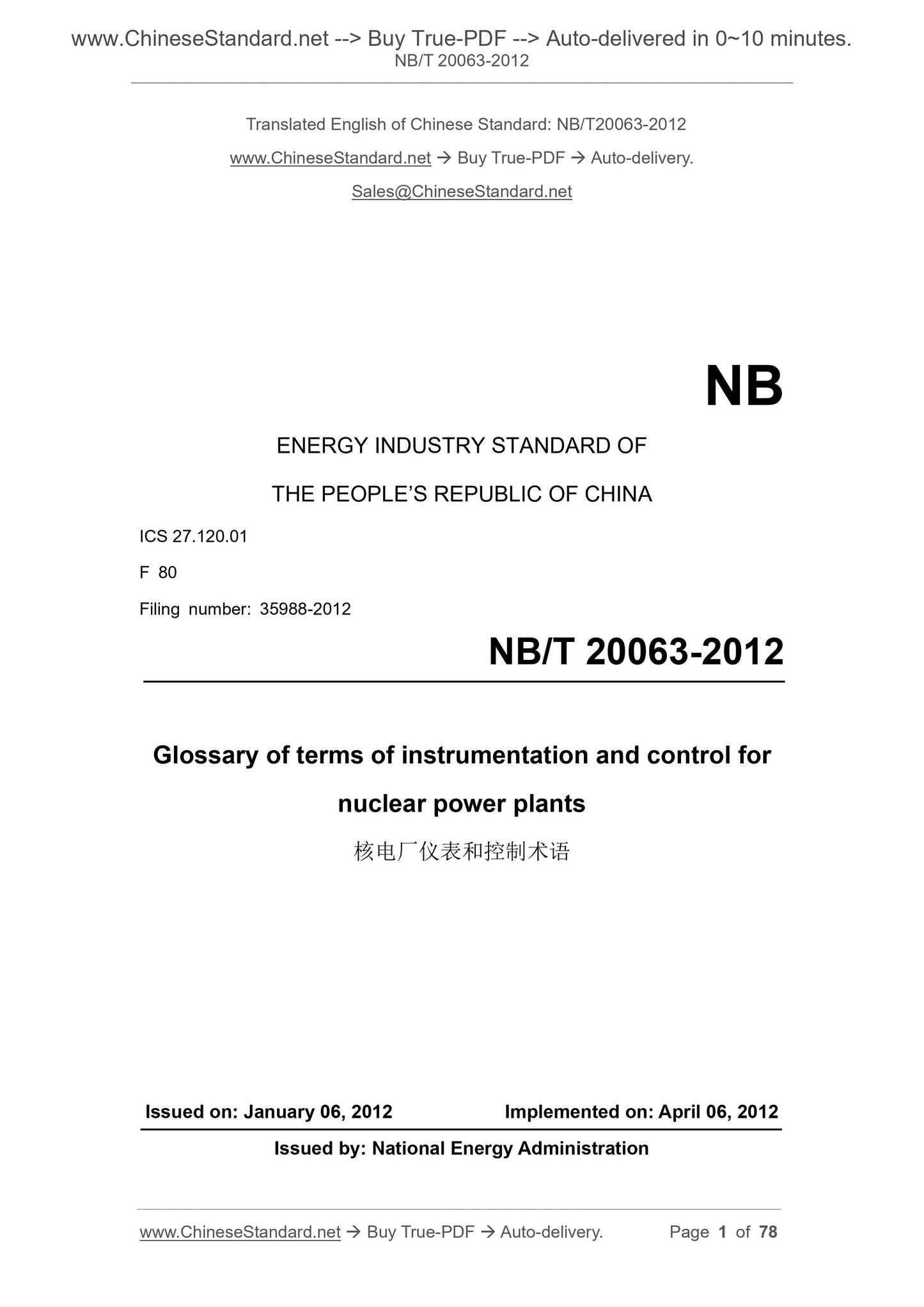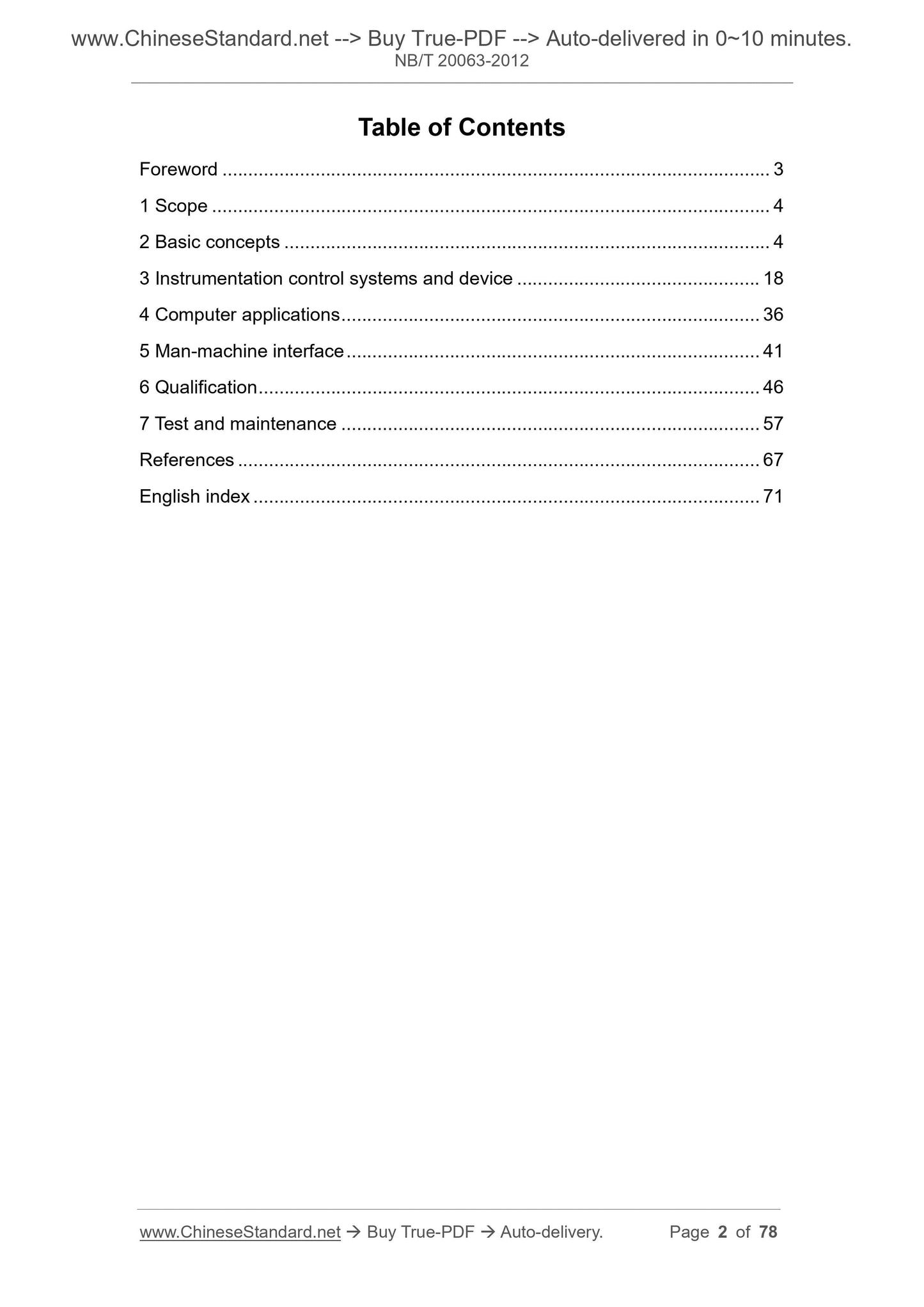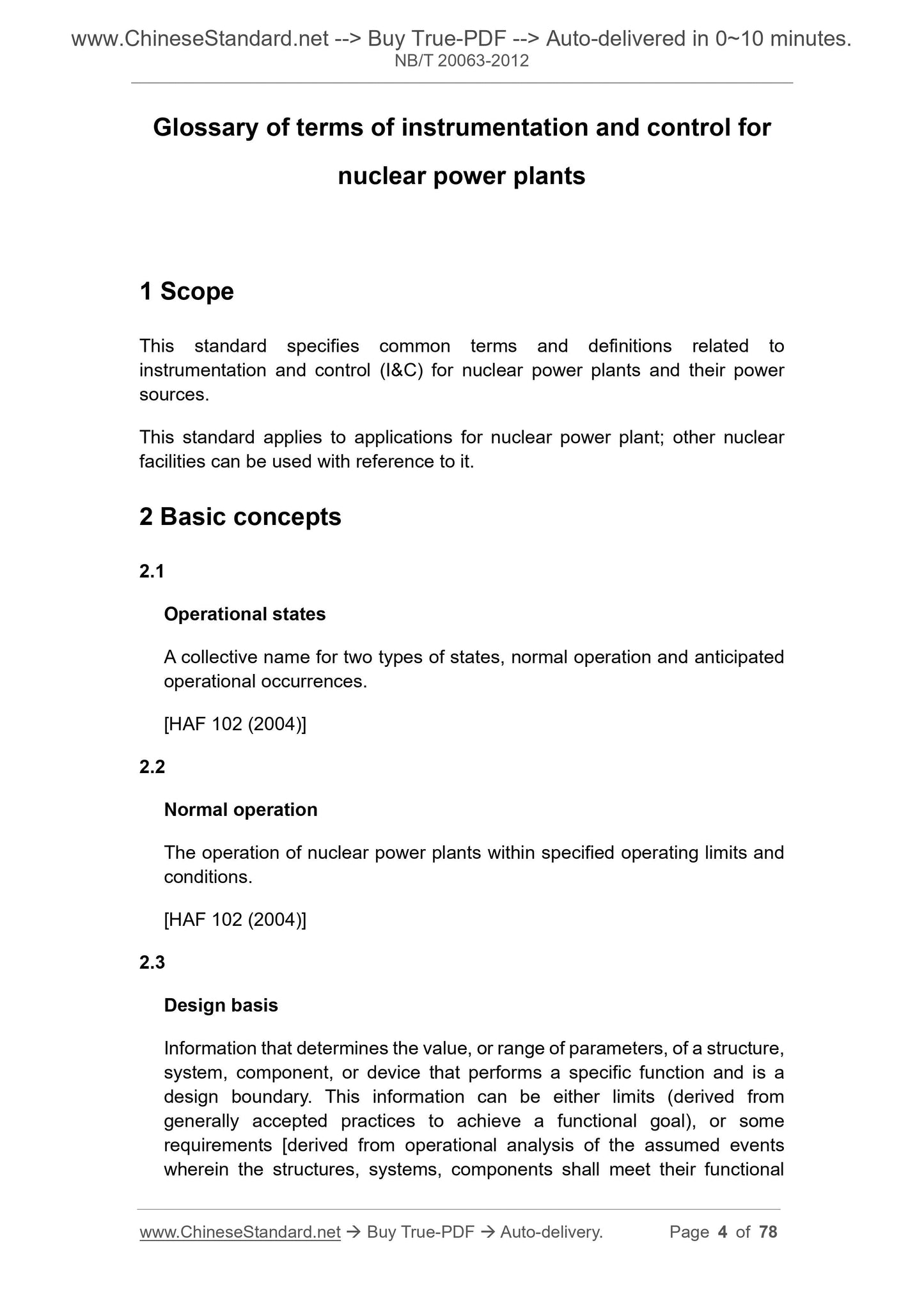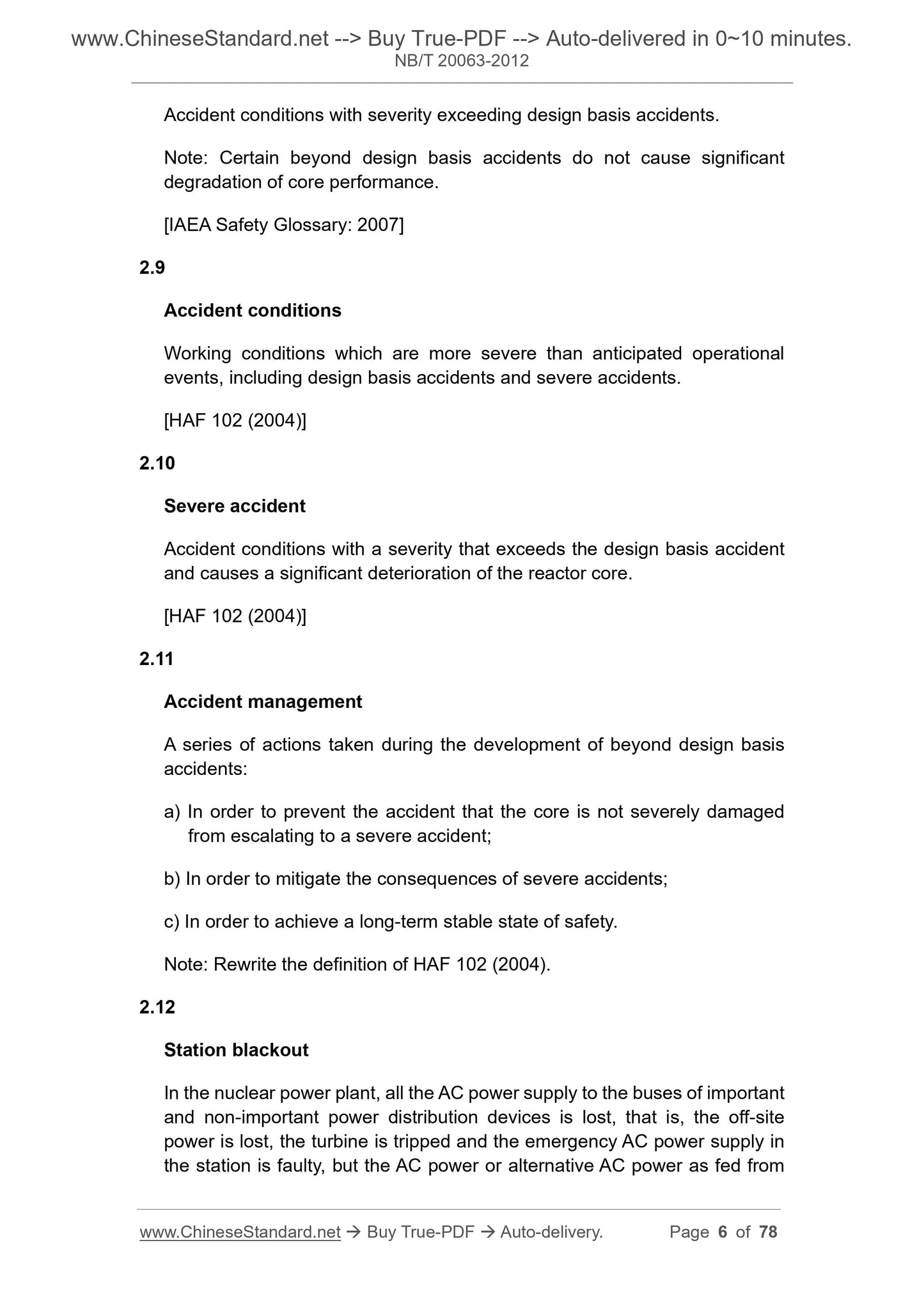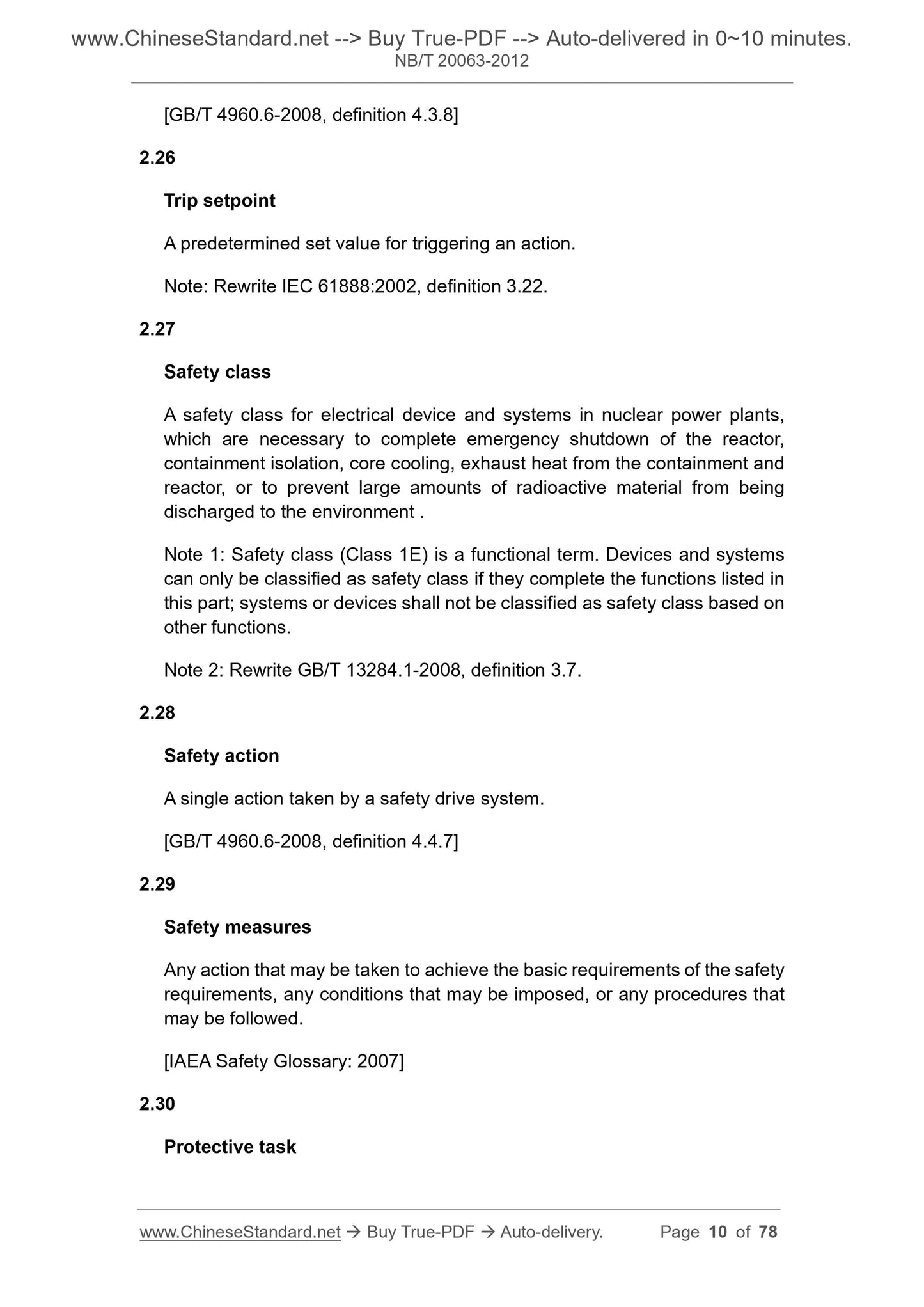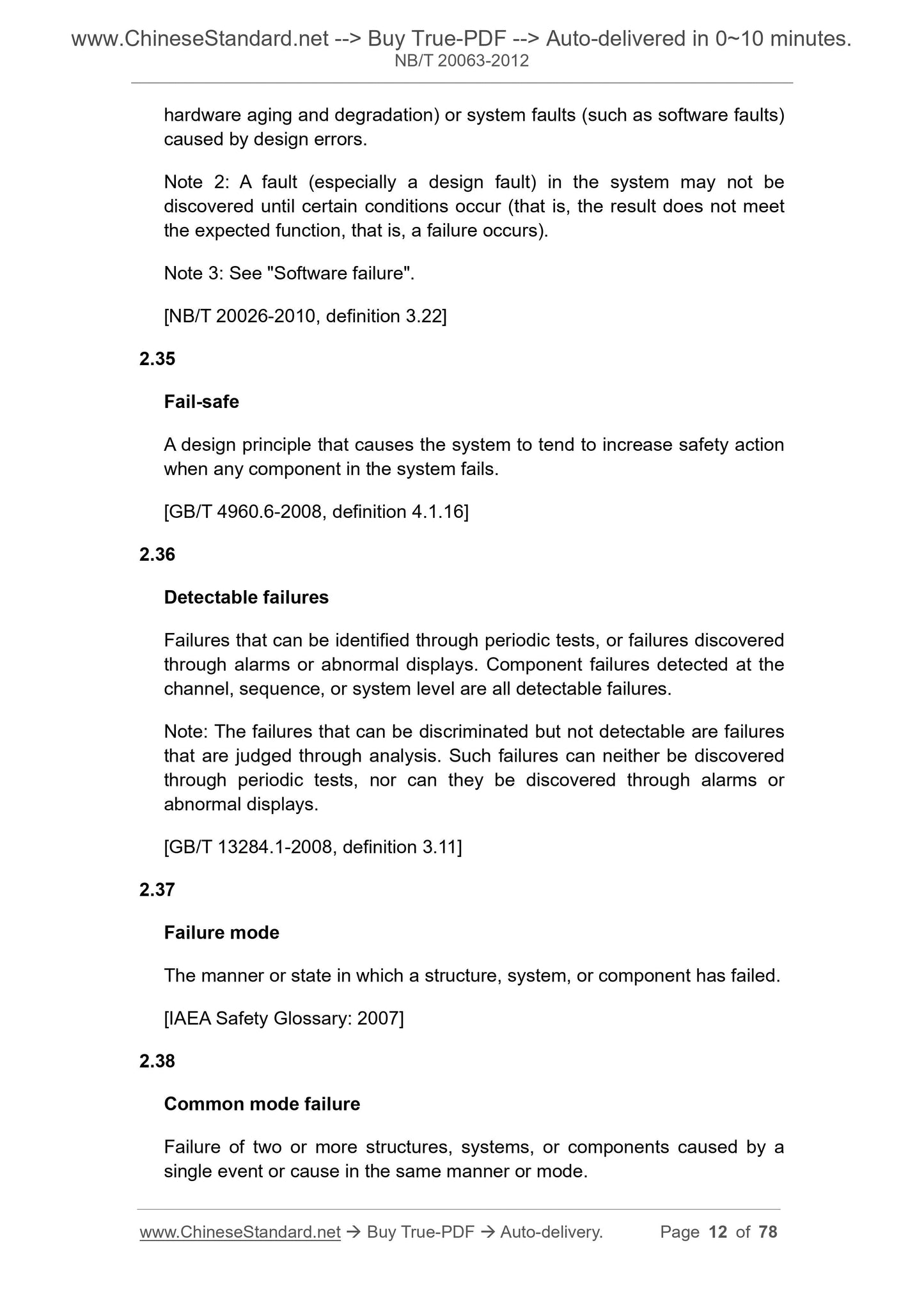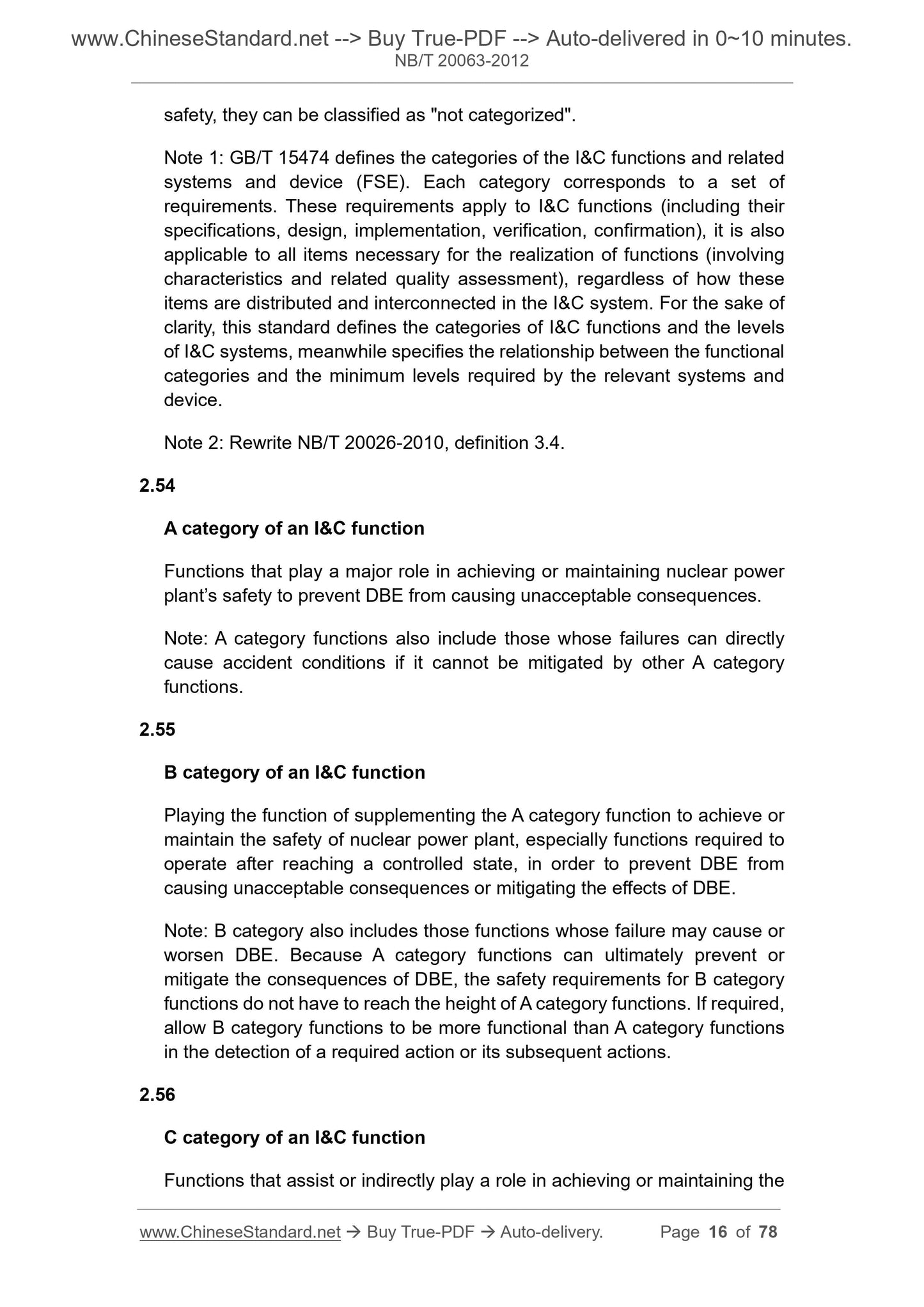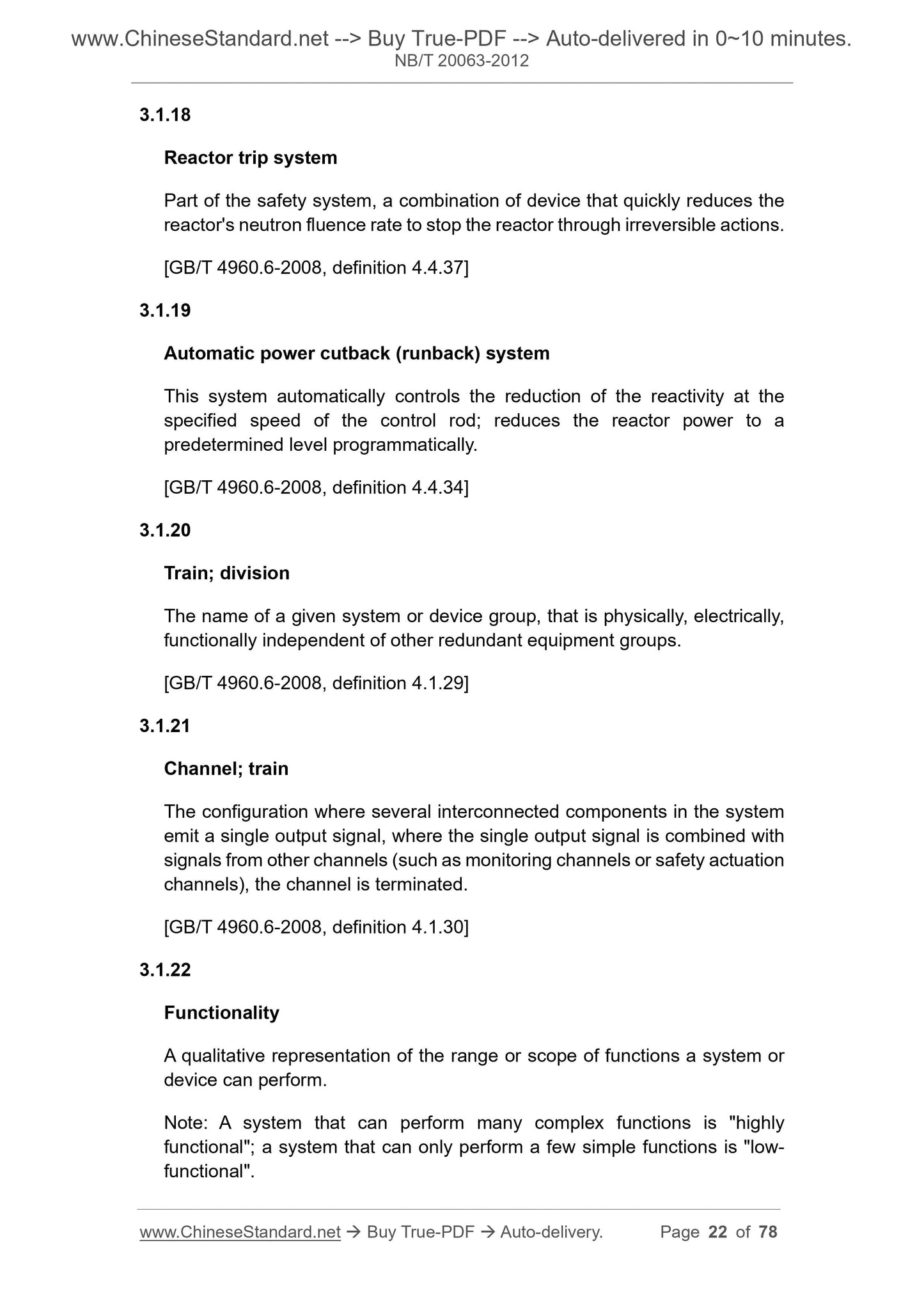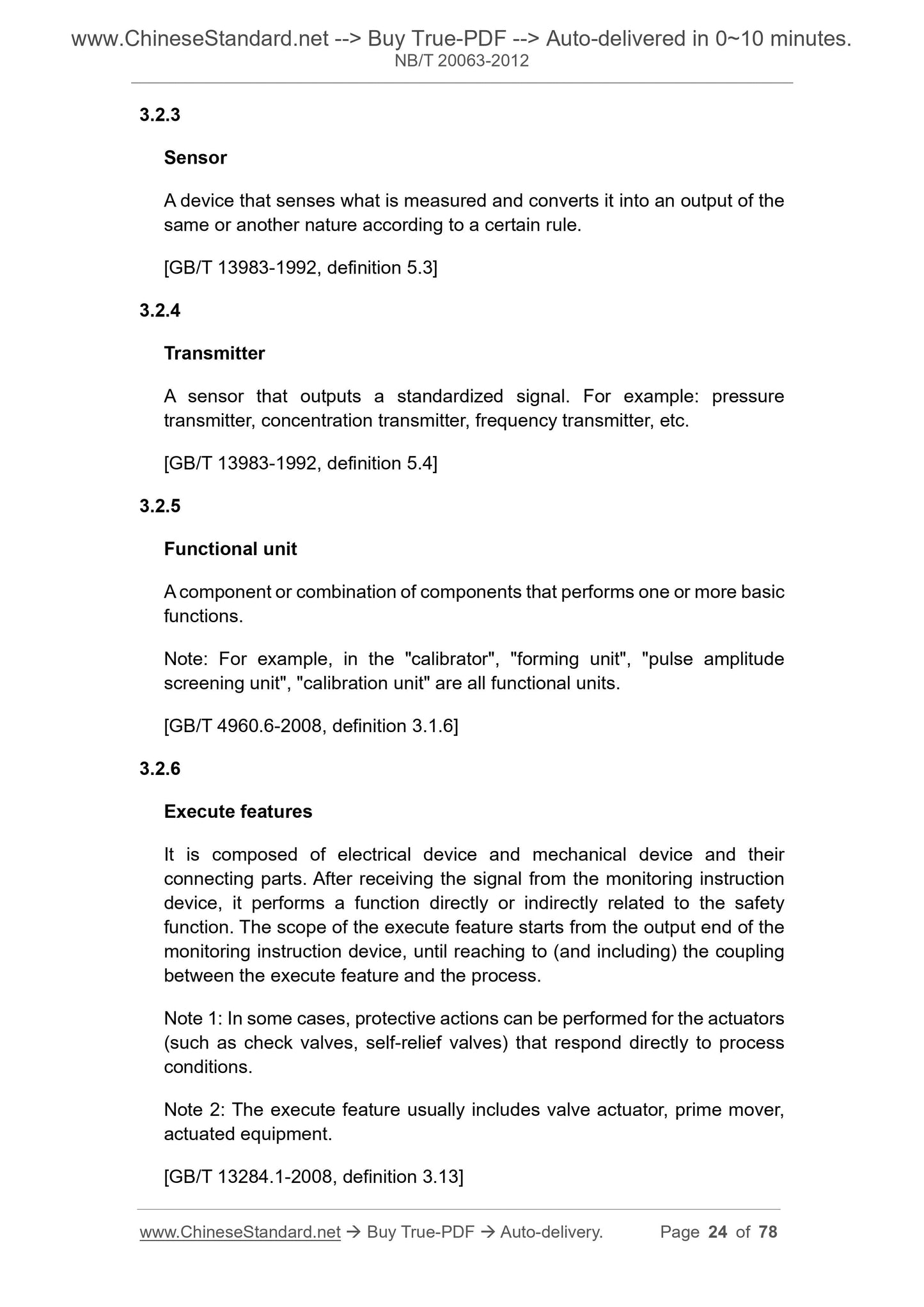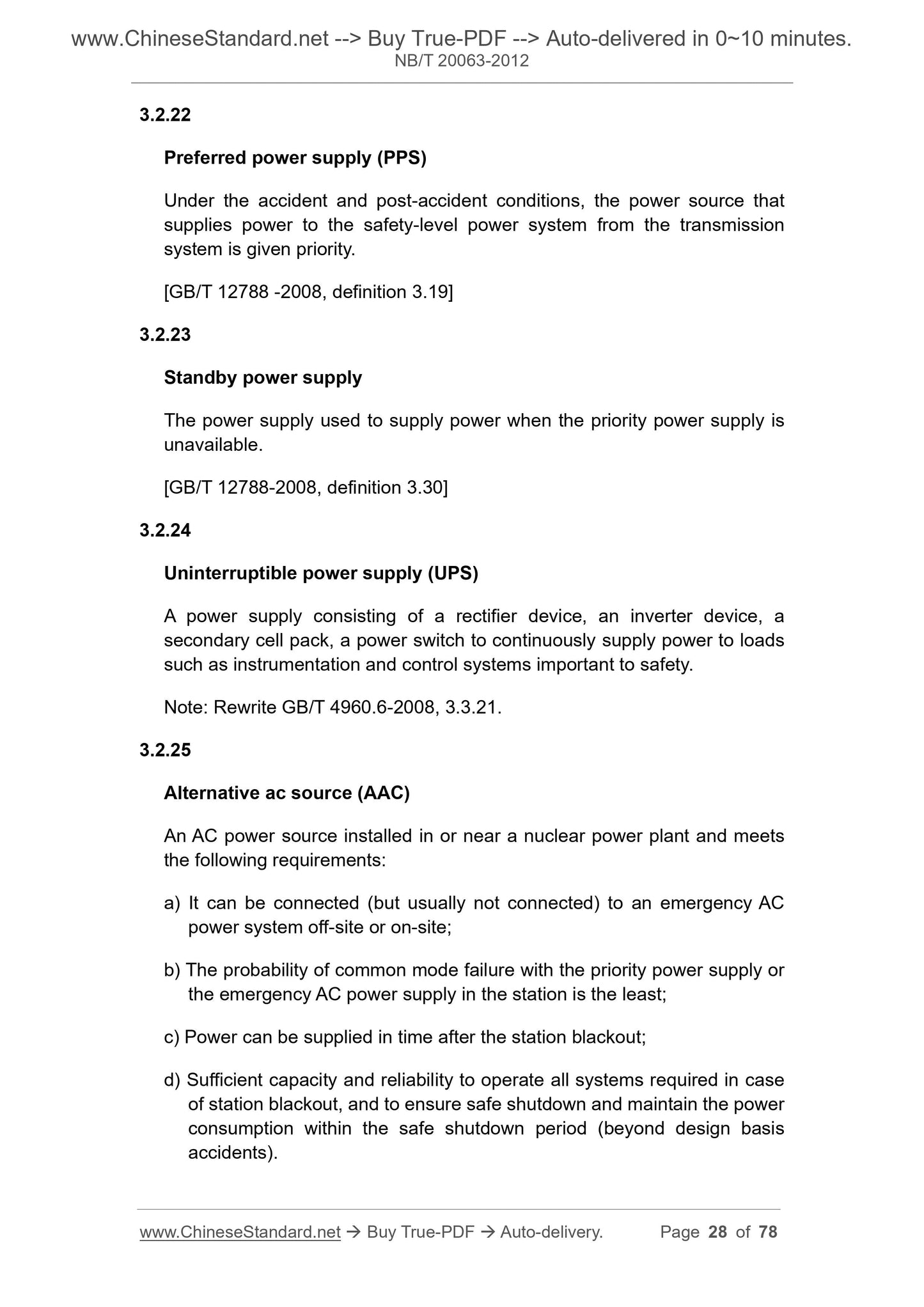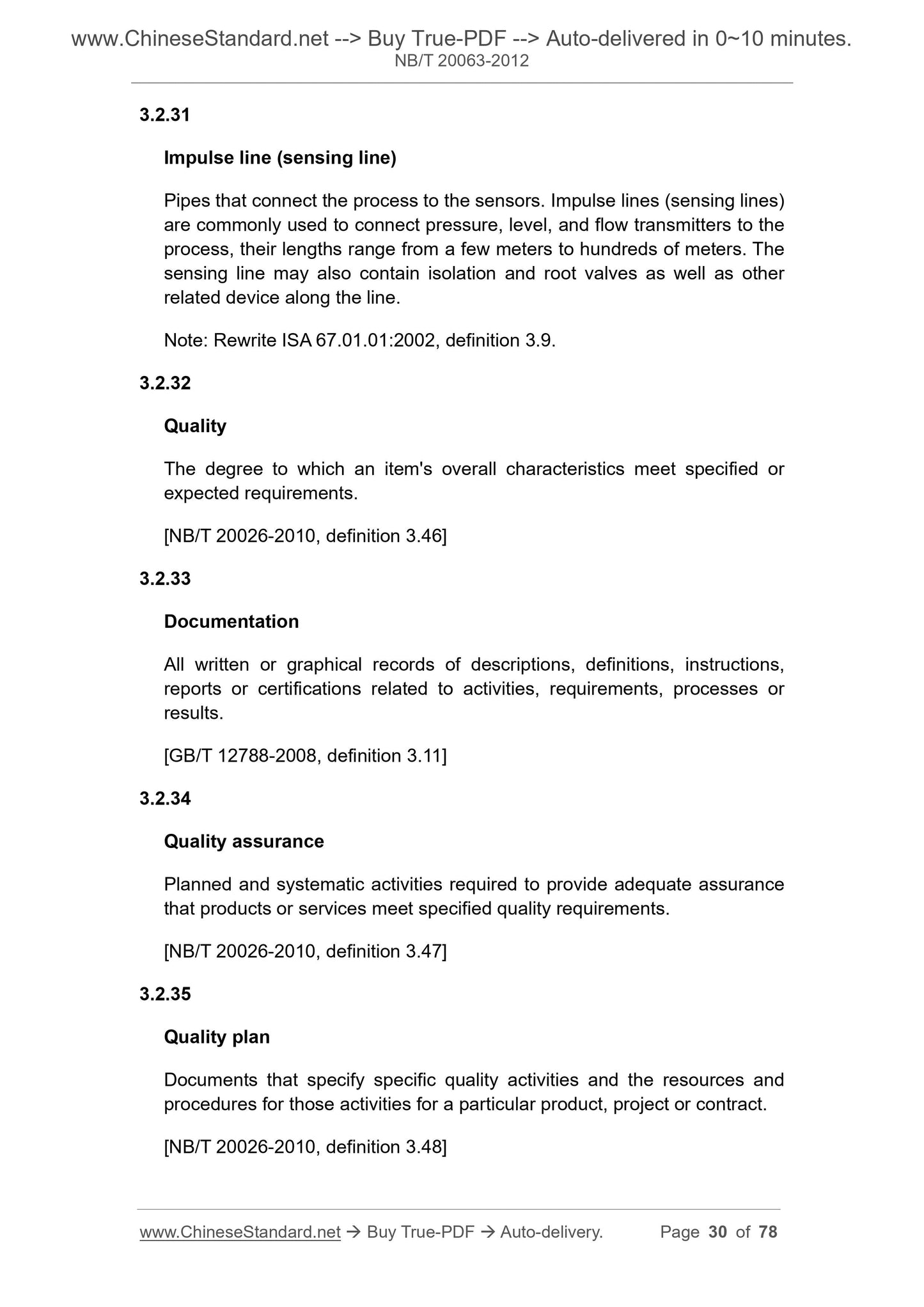1
/
of
12
www.ChineseStandard.us -- Field Test Asia Pte. Ltd.
NB/T 20063-2012 English PDF (NB/T20063-2012)
NB/T 20063-2012 English PDF (NB/T20063-2012)
Regular price
$790.00
Regular price
Sale price
$790.00
Unit price
/
per
Shipping calculated at checkout.
Couldn't load pickup availability
NB/T 20063-2012: Glossary of terms of instrumentation and control for nuclear power plants
Delivery: 9 seconds. Download (and Email) true-PDF + Invoice.Get Quotation: Click NB/T 20063-2012 (Self-service in 1-minute)
Newer / historical versions: NB/T 20063-2012
Preview True-PDF
Scope
This standard specifies common terms and definitions related toinstrumentation and control (I and C) for nuclear power plants and their power
sources.
This standard applies to applications for nuclear power plant; other nuclear
facilities can be used with reference to it.
Basic Data
| Standard ID | NB/T 20063-2012 (NB/T20063-2012) |
| Description (Translated English) | Glossary of terms of instrumentation and control for nuclear power plants |
| Sector / Industry | Energy Industry Standard (Recommended) |
| Classification of Chinese Standard | F80 |
| Classification of International Standard | 27.120.01 |
| Word Count Estimation | 56,594 |
| Regulation (derived from) | National Energy Board Notice No. 2 of 2012; industry standard for filing Notice No. 4 of 2012 (No. 148 overall) |
| Issuing agency(ies) | National Energy Administration |
| Summary | This standard specifies the terms and definitions of nuclear power plant instrumentation and control (I and C) and their power sources. This standard applies to nuclear power plant engineering applications, other nuclear equipment can refer to the use. |
Share
